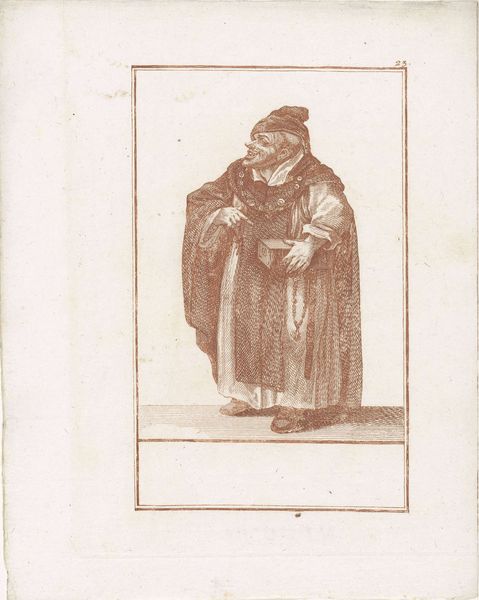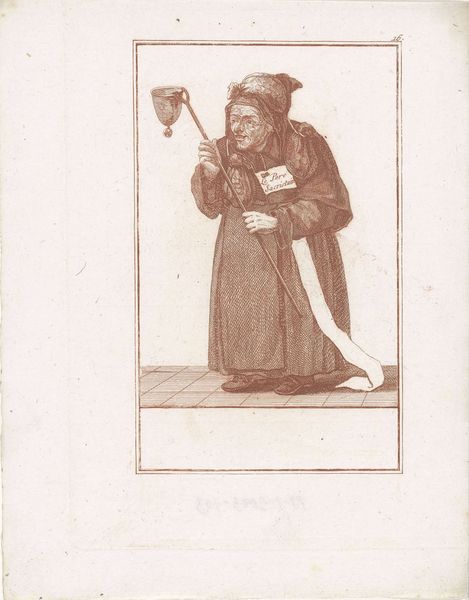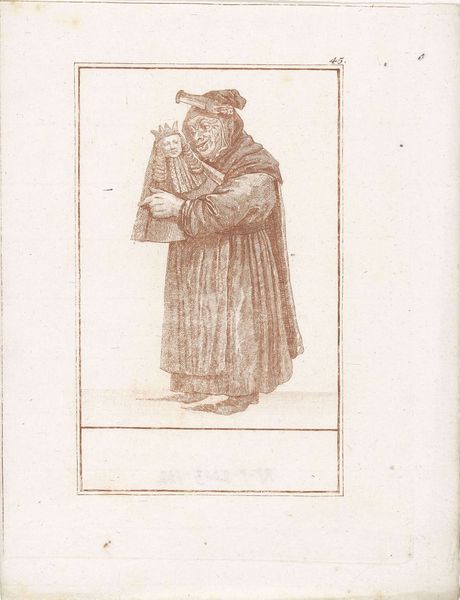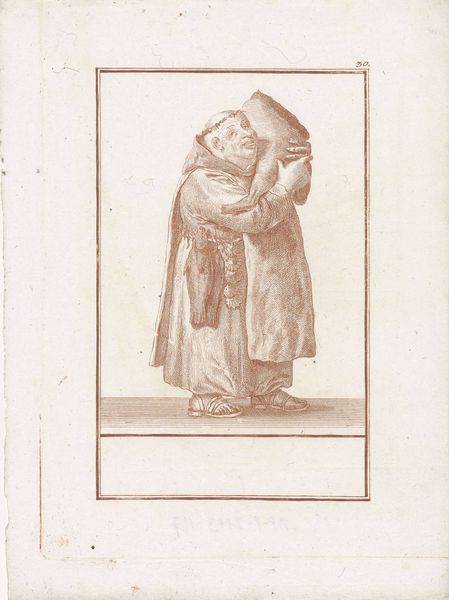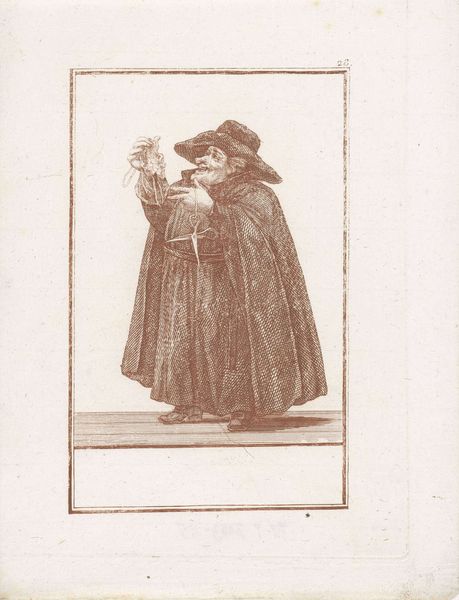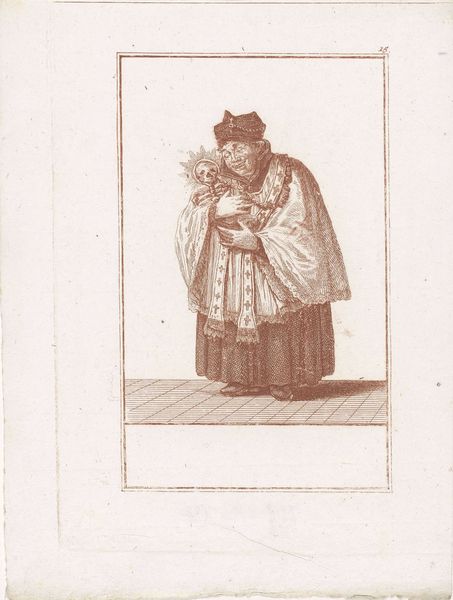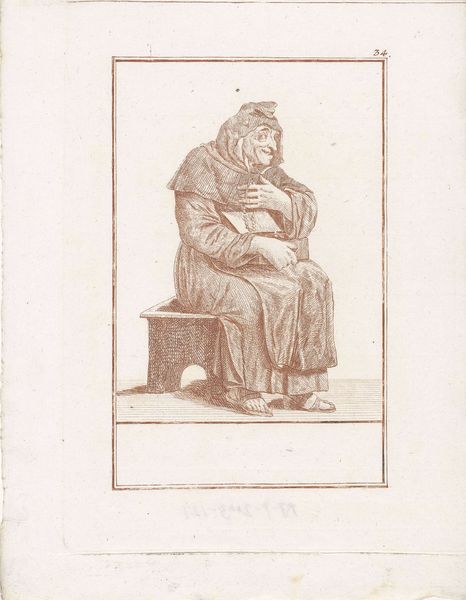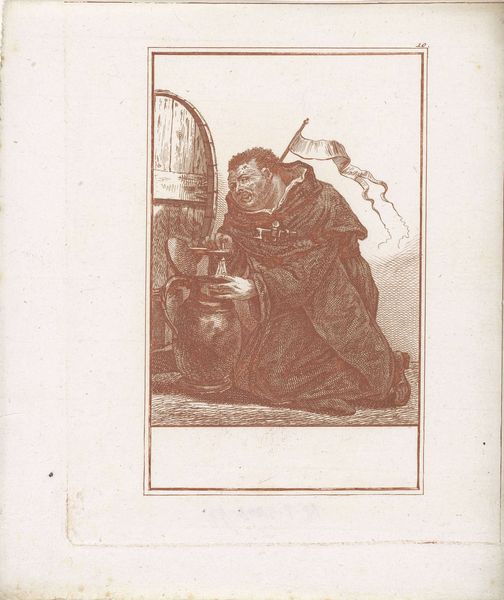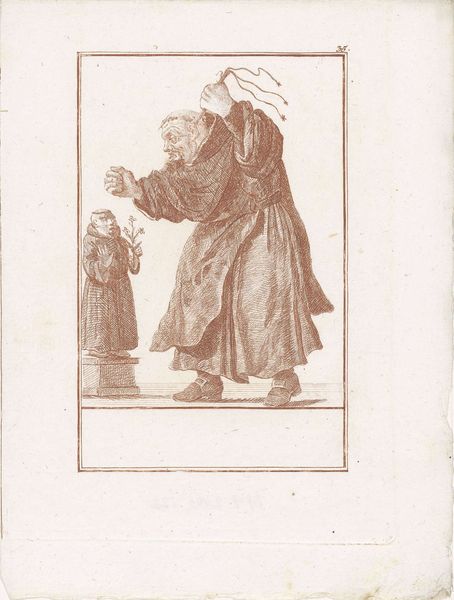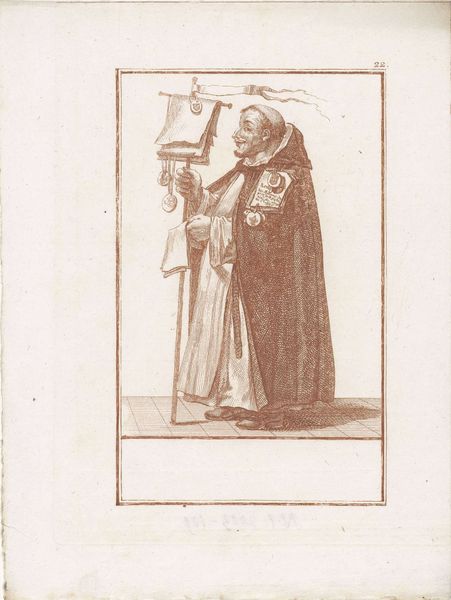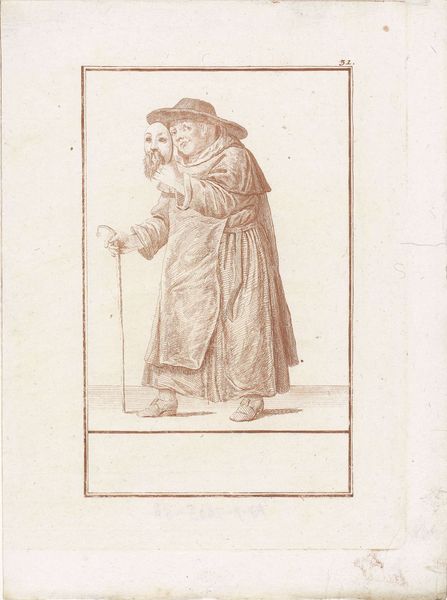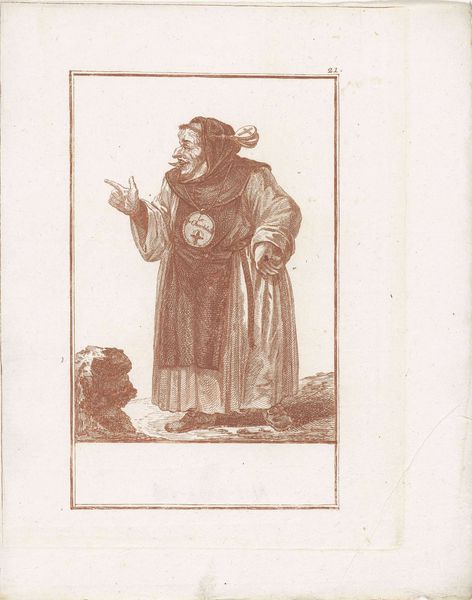
print, engraving
#
portrait
#
baroque
# print
#
old engraving style
#
genre-painting
#
engraving
Dimensions: height 230 mm, width 190 mm
Copyright: Rijks Museum: Open Domain
Curator: Jacob Gole's "Dikke monnik met mand met gevogelte," created around 1724, is a fascinating engraving, currently residing in the Rijksmuseum. It strikes me as darkly comic. Editor: Absolutely. The visual language—the corpulent figure, the overloaded basket, the gluttonous act of consuming a bird—reads as a blatant emblem of excess. How does the work function structurally? Curator: The composition centers the monk, almost square within the frame, establishing him as the dominant element. Notice the tonal gradations achieved through the density of lines, creating a rich sense of texture in the monk’s robes. This suggests an interest in capturing both form and surface quality through line work. Editor: Gole's caricature of the monk evokes potent associations. Monks were frequently lampooned for perceived hypocrisy or decadence during this era, and this image fits squarely into that critical tradition. The symbolic load is rather heavy; he seems weighed down by the earthly delights represented by all that poultry. Curator: I am intrigued by the formal relationship between the various elements – the curvature of the basket, the sharp angles of the dead birds, the circle on the monk's chest—and how these create a dynamic rhythm throughout the relatively confined picture plane. The circular medallion also bears formal resemblance to his rotund belly. Editor: The image's humor operates through recognizable visual shortcuts. This isn’t merely about satirizing the Church; it engages with broader anxieties about social roles, moral corruption, and indulgence. Look closely at the way his hat mirrors a crown – there is something almost kingly about the rendering. Curator: Certainly, and considering the socio-historical context of Baroque portraiture, this playful twisting of conventions offers compelling material for inquiry. I appreciate its graphic simplicity that manages to simultaneously ridicule and represent. Editor: It leaves you considering the continuity of certain symbols and prejudices over time and the way cultural narratives get constructed through visual rhetoric.
Comments
No comments
Be the first to comment and join the conversation on the ultimate creative platform.
